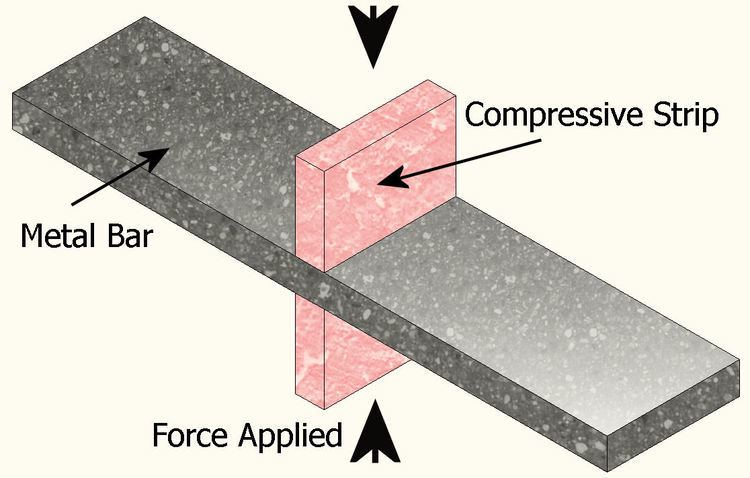 | ||
The plane strain compression test, also known as the Watts-Ford test, is an engineering test, and is a particularly specialized way of determining some of the material characteristics of the metal being tested, and its specialization can be summarized by this quote:
The test is useful when the sheet pieces are too small for a tensile test of a balanced biaxial test. It can give stress-strain curves up to considerably higher strains than tensile tests.
The Advantages of the Watts-Ford test are:- 1) It is Very Convenient for testing thin sheets or strips. 2) It is very similar to a rolling process (in manufacturing analyses) 3) Frictional effects may be minimised 4) There is no 'barelling' as would occur in a cylindrical compression test. 5) The plane strain deformation eases the analysis.
The testing essentially consists of a thin metal bar being compressed by two equally wide compressive strips, which are located of opposite sides of the thin bar. Then, over a range of increasing loads on the bar, the compressive forces lead to the thickness of the metal bar being reduced. This change of thickness is then measured sequentially after each loading, and after some mathematics a stress-strain curve can be plotted.
